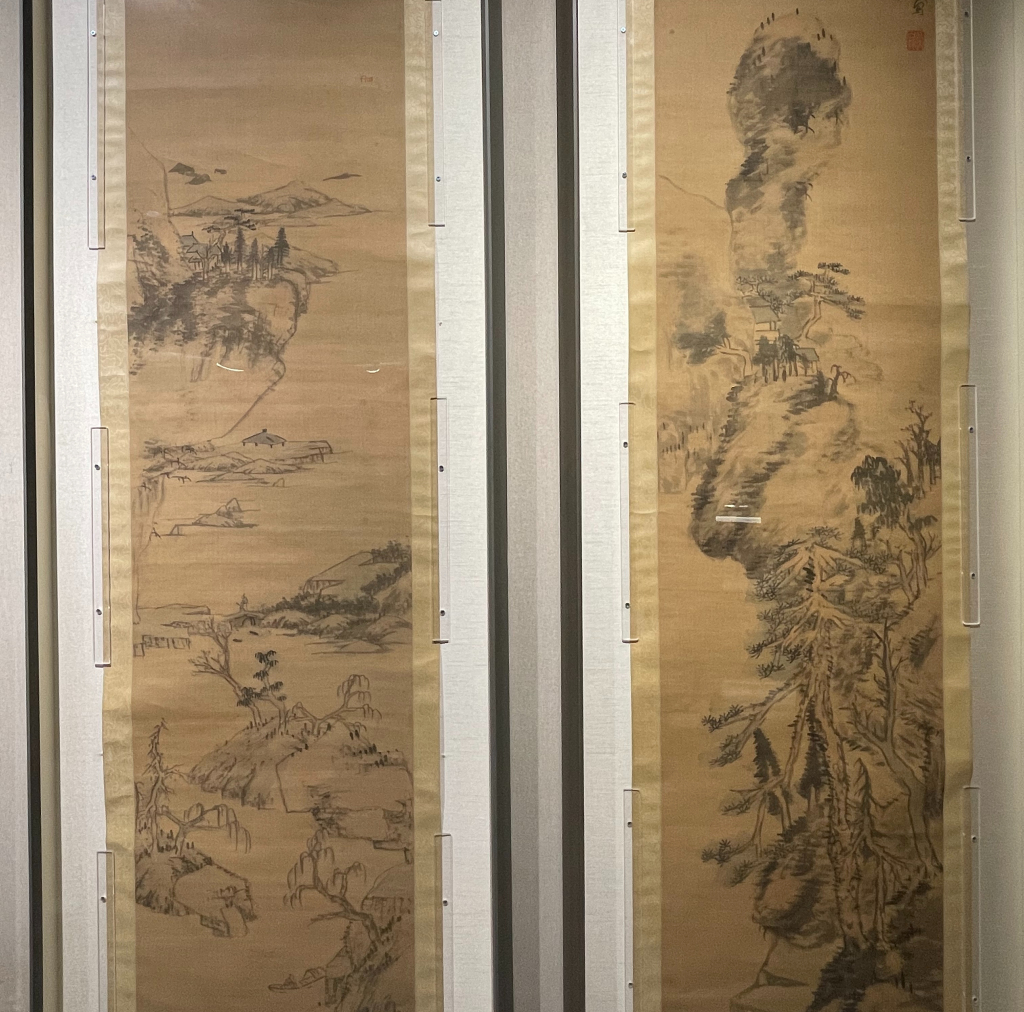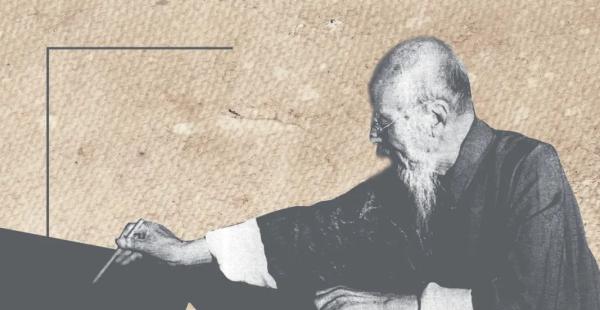
"Flowers on the River" collected by Tianjin Museum is a masterpiece of Bada Shanrenda's freehand flower-and-bird painting. With its strong artistic personality and independence, Bada Shanren flaunts the history of painting, and "Flowers on the River" is known as a milestone work in the history of Chinese flower-and-bird painting. The work is currently on display in New York, USA.
The Paper learned that the National Art Museum of China, New York, launched "Flowers on the River: The Way of Chinese Flower and Bird Painting, 1368-1911, Selected Treasures from Tianjin Museum/Changzhou Museum" on March 23. The exhibition is also a three-year exhibition. After the epidemic, the first Chinese cultural relics went to the United States for exhibition. With the theme of Chinese flower-and-bird painting, the exhibition presents more than one hundred pieces of fine Chinese paintings spanning five centuries from the Ming and Qing Dynasties. In addition to Zhu Da's "Flowers on the River" hand scroll, Lu Zhi's "Pear Blossoms and Two Swallows" and Yun Shouping's Vegetables and Fruits Album", Xu Gu's "Miscellaneous Picture Album", etc.

Zhu Da (1626–1705), "Flowers on the River" volume (partial), collected by Tianjin Museum
China Institute of China Art Museum of New York is a cultural institution in the United States dedicated to introducing Chinese art and is famous for its exhibitions on Chinese art. The museum officially reopened to the public on March 23 this year. "The reopening of China Art Museum of China Institute is exciting. The artistic expression of animals and plants in Chinese flower-and-bird paintings provides us with a path to return to nature." Hai Weilan, Director of China Institute of China Art Museum explain.
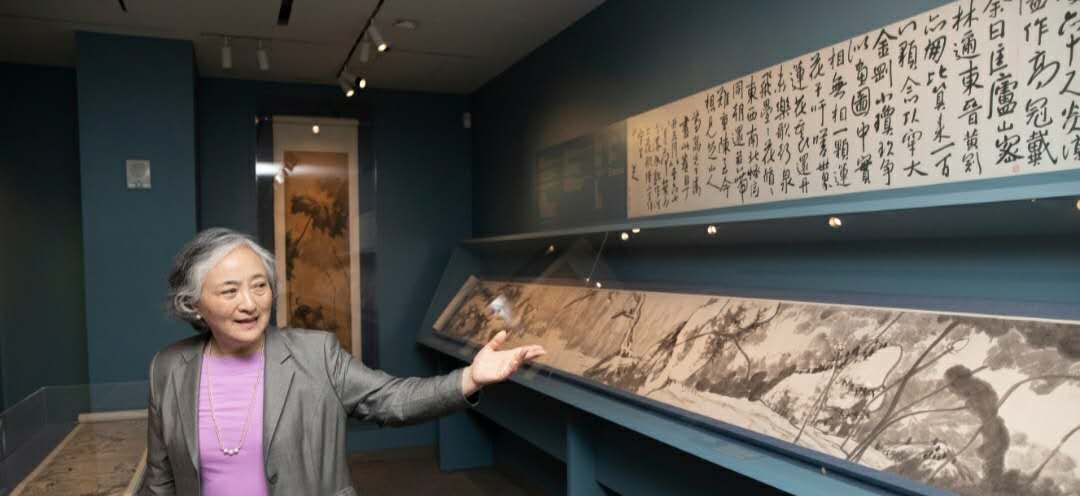
Hai Weilan, Director of China Art Museum, China Institute
The exhibition takes more than 100 paintings by 59 painters during the Ming and Qing Dynasties (1368-1911) for more than 500 years as an example, trying to show the different styles of the Ming and Qing painters' schools from the two major systems of the royal academy style and the field scholar style characteristics, the humanistic connotation of flower-and-bird painting and its universality and practicality. Artists exhibited include Lin Liang, Lu Ji, Shen Quan, Hu Mei, Chen Hongshou, Ma Shouzhen, Wen Zhengming, Tang Yin, Zhou Zhimian, Lu Zhi, Chen Chun, Wang Guxiang, Xu Wei, Xiang Shengmo, Zheng Xie, Jin Nong, Shi Tao, Zhu Da and Yun Shou are equal.
The core exhibit of the exhibition is the long scroll of "Flowers on the River" by the famous painter Zhu Da (1626-1705, Bada Shanren), one of the four monks in the early Qing Dynasty. The volume was created in 1697, from which this exhibition takes its title. Its author Zhu Da (1626-1705, known as Bada Shanren) is one of the most famous painters in the history of Chinese painting. The picture he created is nearly 13 meters long. The picture is magnificent, ups and downs, and hearty . Behind the picture, the artist inscribed his own poem "Song of Flowers on the River" in running script. The emotion is unrestrained and rich in imagination, and the calligraphy is smooth and sophisticated, making the whole volume a classic of poetry, calligraphy, painting and printing. The volume of "Flowers on the River" was previously exhibited at the "Famous Ancient Chinese Paintings 700-1900" held at the Victoria and Albert Museum in London in 2013.
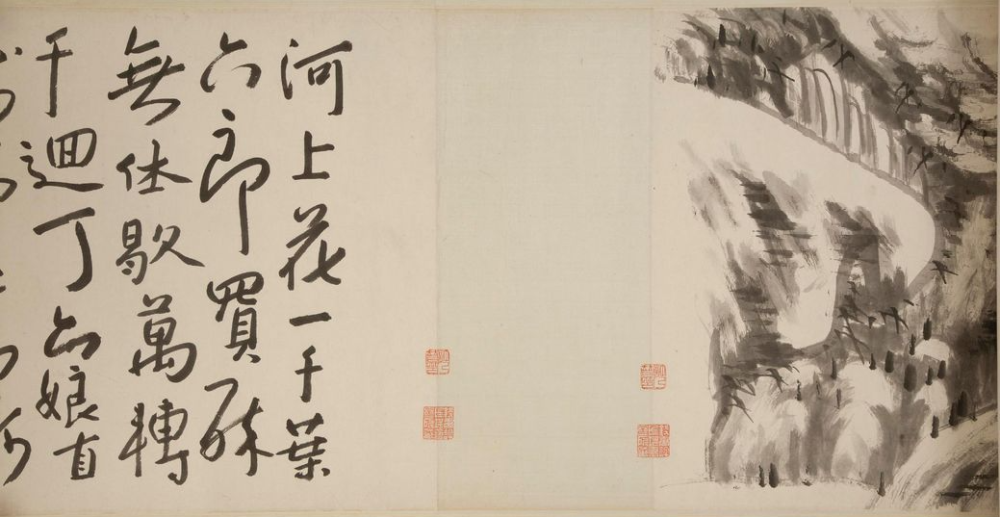
"Flowers on the River" volume (partial) collected by Tianjin Museum by Zhu Da of the Qing Dynasty
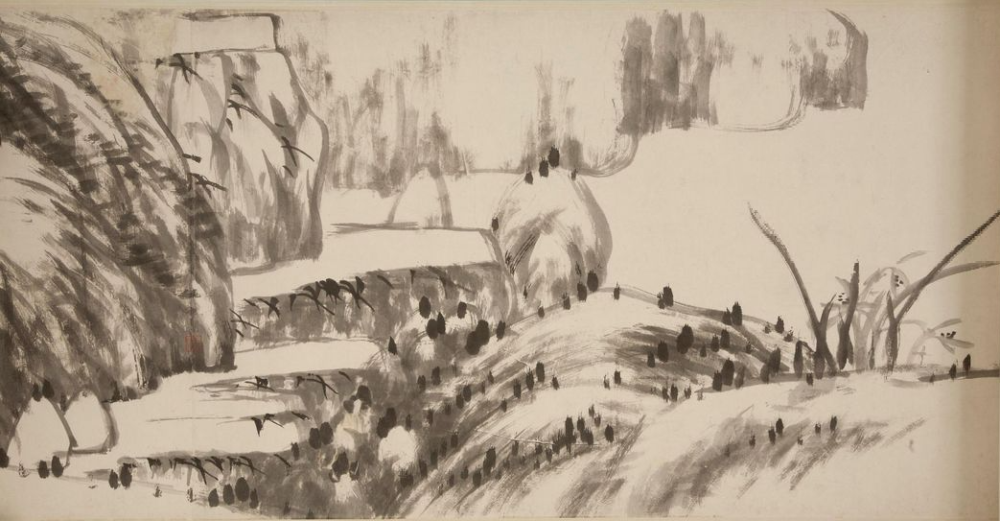
"Flowers on the River" volume (partial) collected by Tianjin Museum by Zhu Da of the Qing Dynasty
When the Ming Dynasty fell in 1644, Bada Shanren, who was the clan of the Ming Dynasty, lived in seclusion in Buddhist temples and became monks. In 1680, he began to create art, and he was excellent in calligraphy and painting. The volume of the handed down masterpiece "Flowers on the River" drawn by him when he was 72 years old depicts the process of a lotus from tenderness to full bloom, and then blends into the landscape, which is full of metaphors related to his life experience. This painting is both meditative and casual, and the loose and unrestrained brushwork has become the forerunner of abstract freehand painting for hundreds of years.

Lu Zhi's "Twin Swallows in Pear Blossoms" hanging scroll, ink and color on paper Collected by Tianjin Museum, this is a representative work of Lu Zhi's flower-and-bird paintings. Using the traditional double hook method, but the ink color is rich in changes, combined with freehand brushwork and freehand brushwork, it is vivid and elegant, which can represent the style and elegant aesthetic pursuit of the Wumen School of Painting. The author wrote a seven-character poem by himself, and had many painting friends of the Wu family, including his teacher Wen Zhengming, write postscripts. Once entered the Qing Dynasty in Tibet, Emperor Qianlong watched it many times, and wrote poems and seals.
The exhibition is divided into three parts: "Golden Plums in Palaces: Courtyard Style and Serving Painters"; "Scent of Wild Plums: Scholar Style and Painter Schools" and "Business of Heaven and Earth: Flower-and-Bird Paintings and Customs".
Gongmei Jingui——Painter of courtyard style and service
The courtyard represents the taste of the royal family. The palace model of flower-and-bird painting began with the painting style of "Huang Family Wealth and Nobility" by the court painters Huang Quan (about 903-965) and Huang Jucai (about 933-about 993), the court painters of the Shu Hanlin Academy in the late Tang Dynasty and Five Dynasties, and soaked in the painting circle of the early Song Dynasty For decades, the royal aesthetic taste of "wealth and honor" has been established. After the advocacy and development of Song Huizong (1082-1135), the art emperor of the Song Dynasty, the courtyard flower-and-bird painting reached its peak and became synonymous with fine workmanship and magnificence. In addition, the general characteristics of courtyard-style flower-and-bird paintings are also manifested in: In addition to the sketches, they still focus on panoramic composition, and deliberately combine animals and plants to imply auspiciousness and wealth.

The first part "Golden Plums in the Palace" exhibits Lin Liang's Axis of Collecting Poultry in a Lotus Pond, Lu Ji's Axis of Four Happinesses, Miao Jiahui's "Flowers and Birds Screen" and the second part of "The Fragrance of Wild Plums" a record of "Moonlight Plum Blossoms" ", Chen Hongshou "Plum Bamboo Butterfly Vertical Scroll"
The courtyard paintings are mostly made by court painters. In the exhibition are the works of Lin Liang (approximately 1428-1494), Lu Ji (1429-1505), Jiang Tingxi (1669-1732), Qian Weicheng (1720-1772) and Qian Weicheng (1720-1772), famous court flower-and-bird painters of the Ming and Qing dynasties, and The works of flower-and-bird painters Hu Mei (birth and death unknown) and Shen Quan (1682-1760), who were both masters and apprentices, briefly show the appearance and producers of courtyard-style flower-and-bird paintings in the Ming and Qing dynasties. The courtyard style has also become a style, which is imitated and inherited by painters. For example, although Hu Mei, a painter in the Qing Dynasty, did not serve the imperial court, he was well-known for his flower-and-bird paintings in the academy style. Many years later, the Emperor of Japan finally hired Hu Mei's younger brother, court painter Shen Quan, to teach in Japan the painting of flowers and birds in the courtyard style. He is famous for his "Nanping School" sketches.

Ming Luji "Four Happiness Picture Axis" Collection of Tianjin Museum
Court painters were recruited into the palace through recruitment, examination, recommendation, etc., and served in the Royal Academy of Painting. The germination of the Royal Academy of Painting may be traced back to the establishment of the Studio Office of Hongdu School during the reign of Emperor Ming of the Han Dynasty (58-75), the Academy of Painting established under the Academy of Jixian Palace in the Tang Dynasty, and the Imperial Academy during the reign of Emperor Xuanzong of the Tang Dynasty (685-762). The "Hanlin Academy of Painting" was founded in the second year of Mingde in Later Shu Dynasty (935), which was followed in the Song Dynasty and named "Hanlin Academy of Painting". —1644) there were three halls of Wenhua, Wuying, and Renzhi, and in the Qing Dynasty (1644—1911) there were paintings, Ruyi halls, and painting institutes, all of which provided places, titles, and salaries for royal painters to focus on painting. In addition, ministers with artistic talents who served in the imperial court occasionally painted paintings under orders, or they also presented paintings to congratulate them during festivals. Regardless of their usual painting appearance, these artistic talents inside and outside the palace painting academy are all lost for the needs of the court, and their paintings must follow the academy's style standards to suit the court's taste. For example, the court painter Yuan Jiang (1662-1735), who is famous for his boundary paintings, showed his usual sketches of flowers in the exhibition; When the painting was presented, it also changed from the normal, and followed the style of the courtyard, and wrote respectfully: "Chen Gaoqi Pei Hua". The Empress Dowager Cixi, who was in charge of the Qing government for 47 years, became interested in flower and bird painting from the middle of Guangxu (around 1899). In addition to learning painting by herself, she was also looking for ghostwriters across the country. Miao Jiahui (1875-1908) in the exhibition ) is one of the three most beloved female ghostwriters of the Empress Dowager Cixi.

Qing Yuan Jiang's "Sketch of Flowers and Flowers" (one of twelve copies) collected by Tianjin Museum
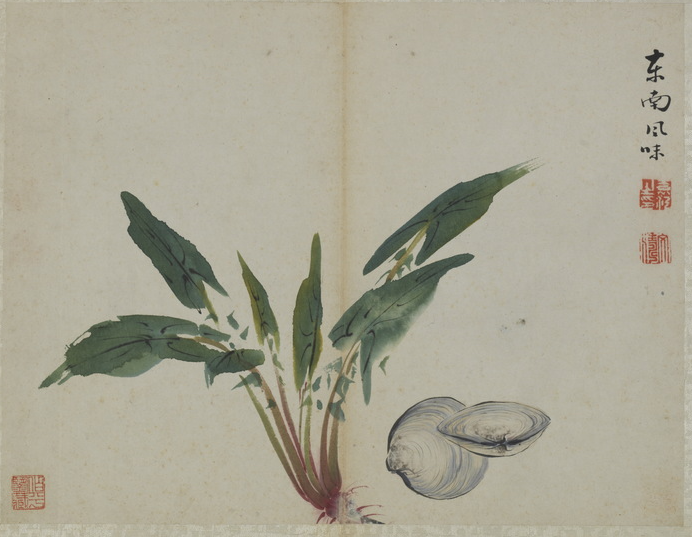
Qing Yuan Jiang's "Sketch of Flowers and Flowers" (one of twelve copies) collected by Tianjin Museum
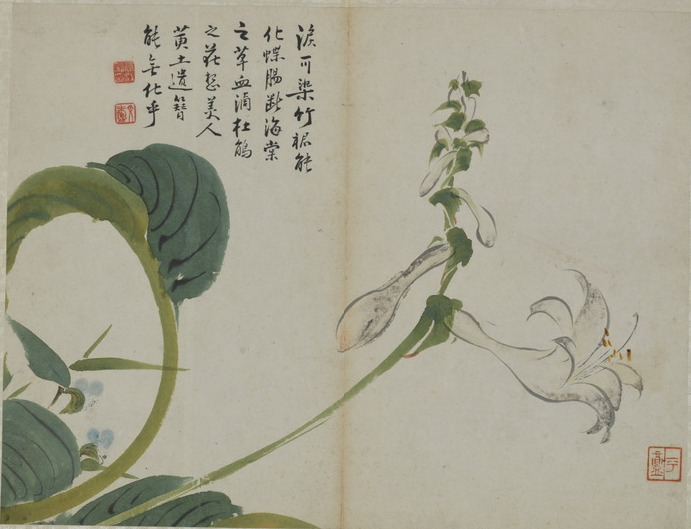
Qing Yuan Jiang's "Sketch of Flowers and Flowers" (one of twelve copies) collected by Tianjin Museum
Wild Plum Fragrance——Scholar Style and Painter School
Scholars style, that is, an artistic style rich in humanistic connotation and expressing individuality, its spiritual source may be traced back to the Six Dynasties era (third to sixth centuries) when individuality was awakened, and it has become the eternal pursuit of Chinese scholars since then.
In the late Tang and Five Dynasties (about the tenth century), the flower-and-bird paintings of "Xu Xi Ye Yi" conveyed another style that was quite different from the "Huang family's wealth and honor" favored by the royal family. Under the influence of this aesthetics, since the Song Dynasty (960-1279), ink-wash flowers and birds have been favored in scholar-style paintings. The birth of this "ink flower" reflects the respect for natural objects in terms of painting form and technique, as well as content selection and expression. Comprehension, perception of the meaning of life, and poetic expression of emotion are most suitable for the remote philosophical thinking and desolate charm of scholars, and are unique in flower-and-bird paintings. His brushwork is free and he has a wide selection of materials. His composition includes panoramic views, more branches and small scenes, and even various things in life, such as fish, crabs, melons and fruits, etc., can be included in the painting. Use multiple artistic techniques to deepen and improve the expression of the picture content, and convey richer humanistic meanings, such as observation of society and meditation on life.
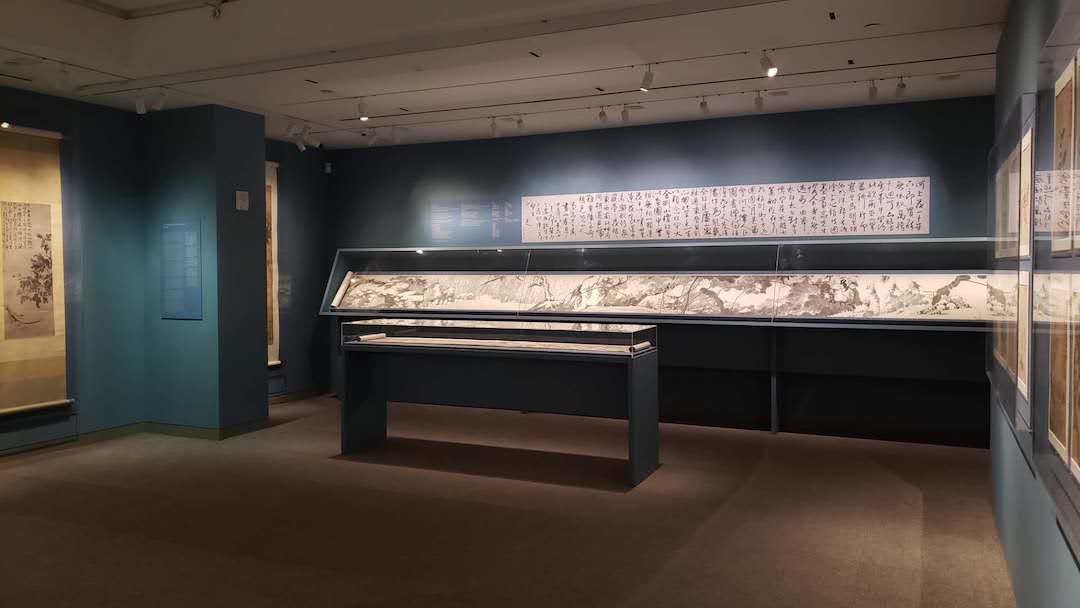
The second part, "Wild Plum Fragrance", exhibits the four monks of the Yangzhou School of Painting. On the right are Jin Nong and Li Qi, in the center are Gao Fenghan, Bada "Flowers on the River", and on the left is Shi Tao Bada "Vertical Axis of Lotus and Bird".

Qing Jinnong's "Flower Atlas" (one in eight) collected by Tianjin Museum
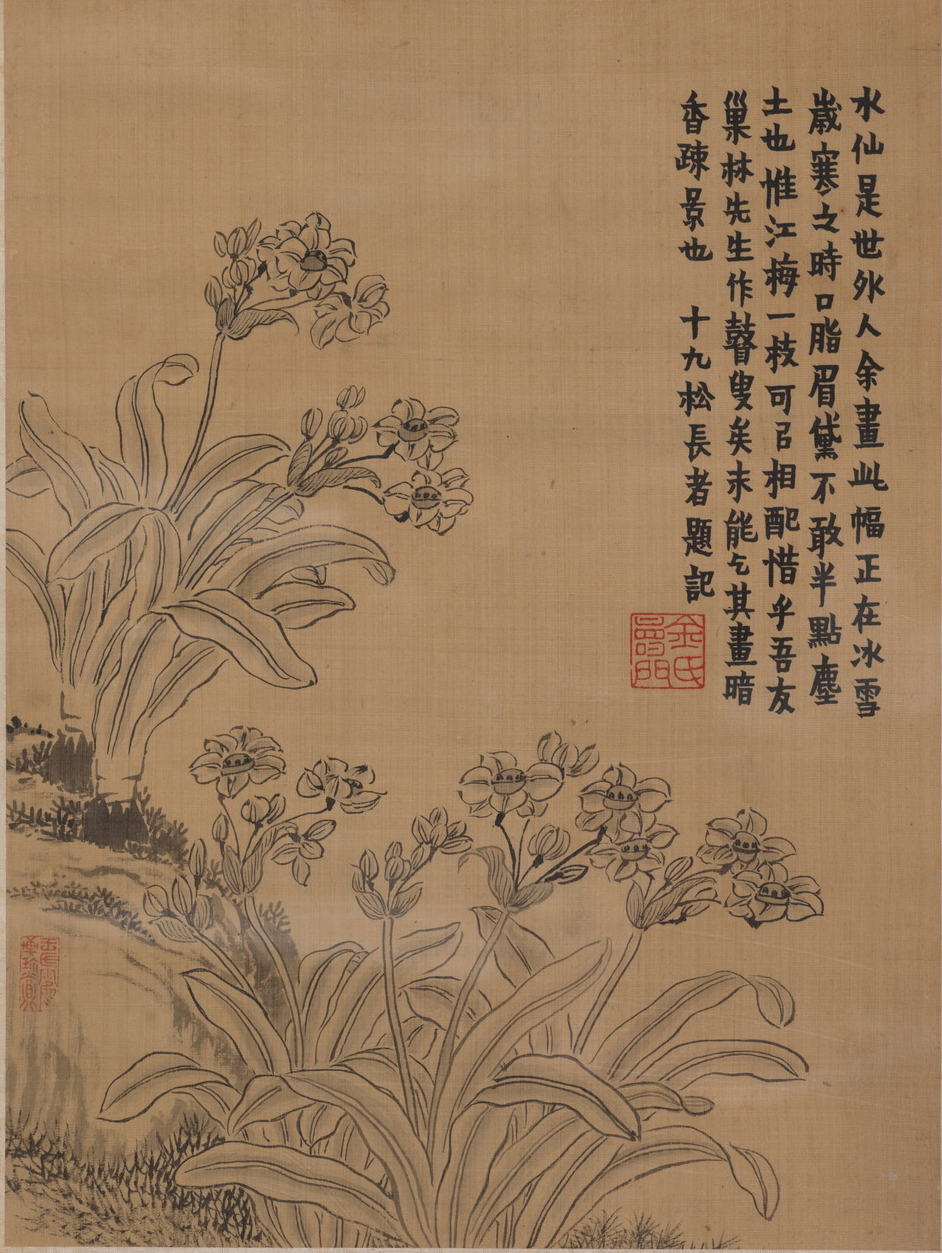
Qing Jinnong's "Flower Atlas" (one in eight) collected by Tianjin Museum
During the Ming and Qing Dynasties, the land of fish and rice in the south of the Yangtze River was the center of economy and trade at that time, and it also seemed to be the center of national art. Shaoxing in Zhejiang, Suzhou, Nanjing, Changzhou and Yangzhou in Jiangsu are all the central areas where painters were born. For example, Shaoxing-born Chen Xianzhang (date of birth and death unknown) was a master of Momei in the Ming Dynasty, and Chen Hongshou (1599-1652), also born in Shaoxing, was an ingenious painting genius in the Ming Dynasty. Painters centered on regions influenced each other, encouraged and passed on, and formed distinctive painting schools, such as the Suzhou-centered Wumen School of Painting, which focused on scholarly taste; Suzhou’s Chen Chun (1484-1544) and Shaoxing’s Xu Wei (1521-1593) successively developed the freehand brushwork of flower and bird painting; the Changzhou School of Painting has influenced the government and the public for hundreds of years with its boneless painting method; the Yangzhou School of Painting is famous for its flamboyant personality; In the collision of conflicts, strive to be unconventional and meet the secular world.
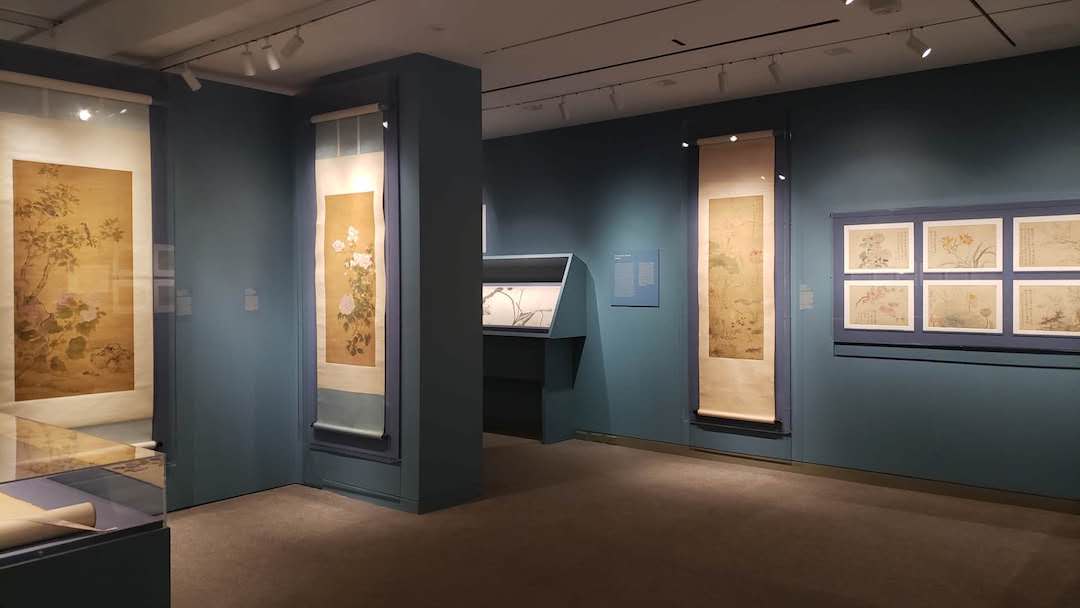
The second part "Scent of wild plums" begins with the Changzhou School of Painting, Tang Yuzhao's "Lotus Heron", Yun Shouping's album, Yun Bing's "Jade Hall Richness", Ma Quan's "White-headed Ronggui", and Yun Bing's hand scroll.

Yun Shouping Vegetables and Fruits Albums and Classroom Drawings Yun Shouping, who is excellent in poetry, calligraphy and painting in the Changzhou Museum, is known as the "Three Wonders of Nantian". His boneless flower and bird paintings were all the rage and far-reaching. The Yun School or "Changzhou School of Painting" has become an indispensable name in the history of Chinese flower-and-bird painting in the Ming and Qing Dynasties. This four-open vegetable and fruit album is dyed with ink and color, and also outlined and rubbed. The brush is free and easy, and the colors are delicate and elegant, full of vitality and approachable, reflecting the natural beauty of the painted objects.
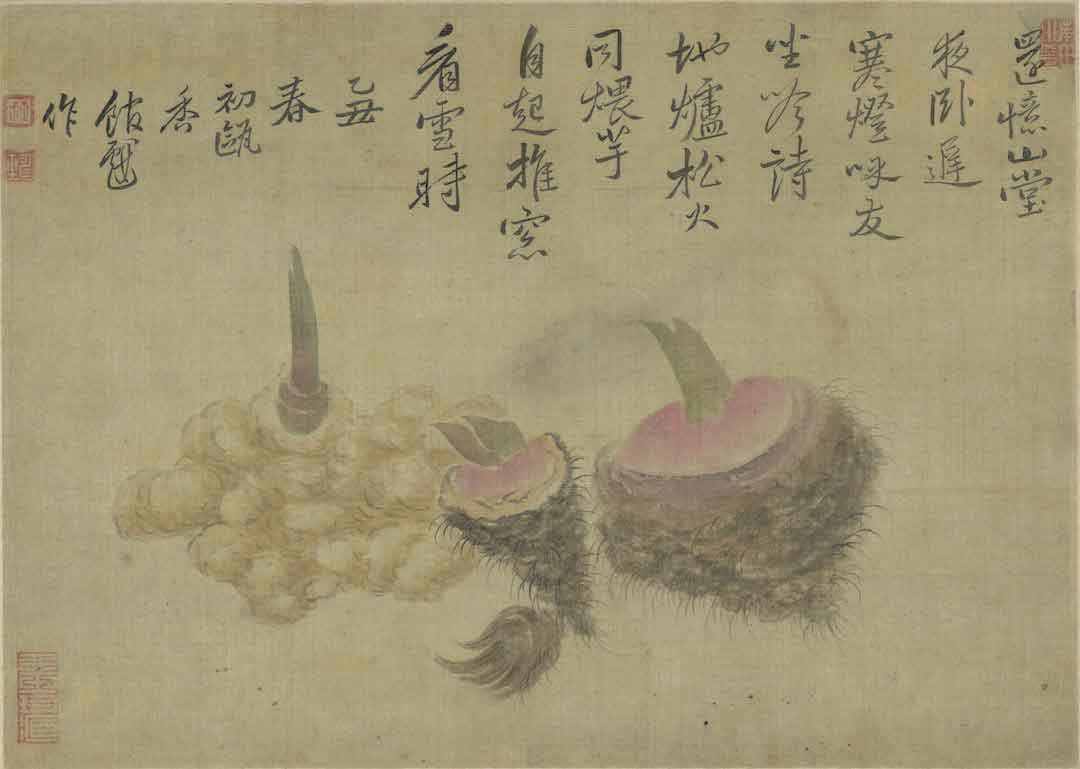
Yun Shouping Vegetables and Fruits Album (Part 1) Collected by Changzhou Museum
The special political environment during the Ming and Qing Dynasties also created the famous "Four Monks in the Early Qing Dynasty" painters for Chinese art history, such as Zhu Da (1626-1705, named Bada Shanren). A thought-provoking painting. In the Ming and Qing Dynasties, many female painters of flower and bird paintings were created, such as Ma Shouzhen (1547-1604), a prodigal woman who was famous for painting orchids by the Qinhuai River in Nanjing in the Ming Dynasty, and Ma Quan (year of birth and death unknown) who was famous for her female painters in the Qing Dynasty. and Yun Bing (year of birth and death unknown). Women's artistic talents have been more expressed during these 500 years.
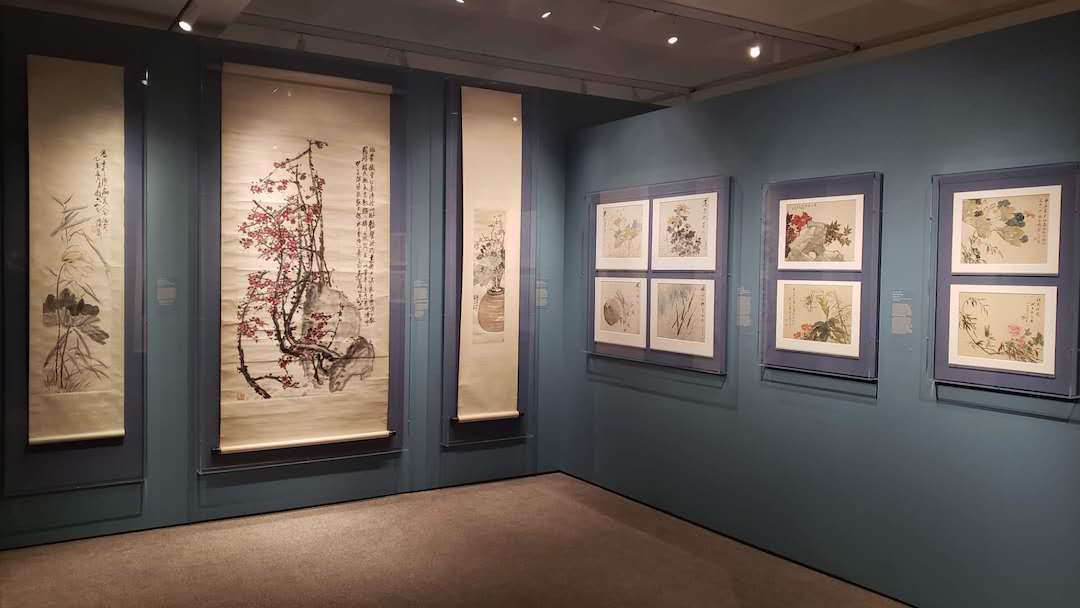
The second part "The Fragrance of Wild Plums" Shanghai Painting School Zhang Xiong, Ren Yi, Xu Gu, Zhao Zhiqian, Wu Changshuo, Pu Hua and other artists

Xugu album (quarto) Collected in Tianjin Museum, Xugu, a painter who sells paintings for a living between Yangzhou, Suzhou and Shanghai, is good at painting flowers, fruits and vegetables, landscapes, good use of dry brush and slant, and mainly uses light colors, which belongs to the Shanghai school A painter with a unique style in China. This album is divided into four parts, with the theme of chrysanthemum, white lotus, algae fish, and garlic flat fish. It is outlined with dry brush, and the colors are light, elegant and moist. It is a masterpiece of his later years.
The Business of Heaven and Earth—Flower-and-bird Paintings and Customs
The flower-and-bird painting depicts nature, and also responds to life and customs, and contains the endless code of nature and life.
The yin and yang of heaven and earth transform into four seasons. Whether it is a country's agriculture or the health of each individual, it depends on the cycle of the four seasons to transport and transform life. Therefore, the themes of the four seasons of spring, summer, autumn and winter are often seen in flower-and-bird paintings. In addition, spring grows and summer grows, autumn harvests and winter hides, each season contains the mysteries of life, flower and bird paintings hide the origin of certain customs, and combine the special animals and plants of each season to express. For example, painters often draw pictures of the yearly dynasty on the first day of the new year, the pictures of peach blossoms and birds to herald the spring, the pictures of laurel and jade rabbits for the Mid-Autumn Festival, and the pictures of three friends in winter and the inspirational winter. And hang it in the room at the right time.
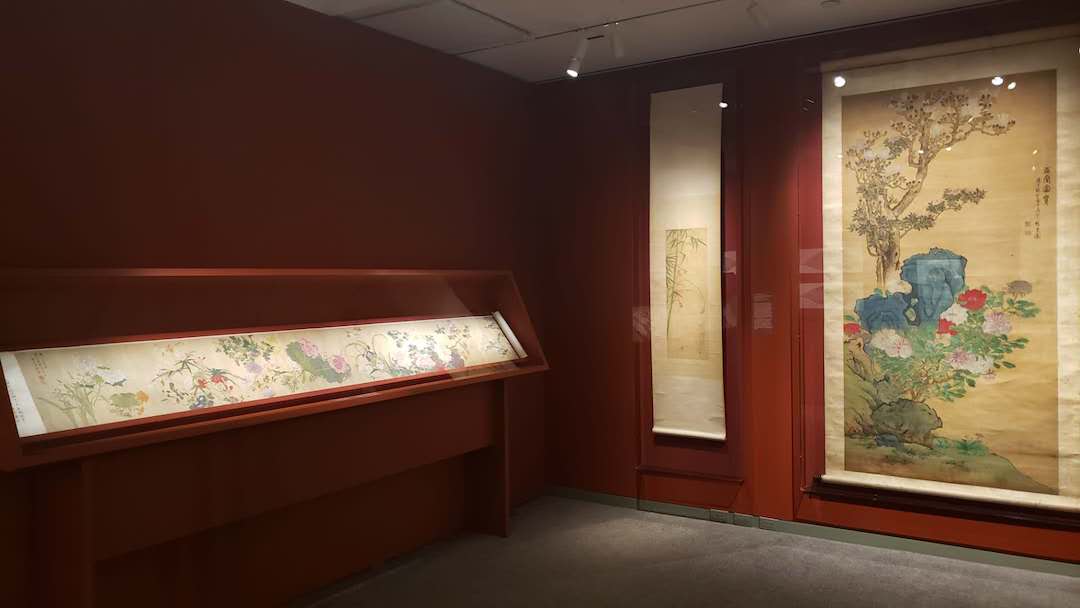
The third part of the exhibition site of "The Business of Heaven and Earth"
Flower and bird painting is universal and friendly, and can be large or small, making it easier to draw in a short period of time. It is not only often the subject of impromptu cooperation at elegant gatherings, but also a social gift for the operation of social relations, whether maintaining friendship or getting married. It can be used in all occasions of reciprocity, such as giving birth to a child or celebrating a birthday. The picturesque fan is a common item in social etiquette. Although the round fan continues the old customs of the Song and Yuan Dynasties, the folding fan has become more popular since the Ming and Qing Dynasties. Taking calligraphy and painting as a gift is really an elegant fashion in Chinese social etiquette.
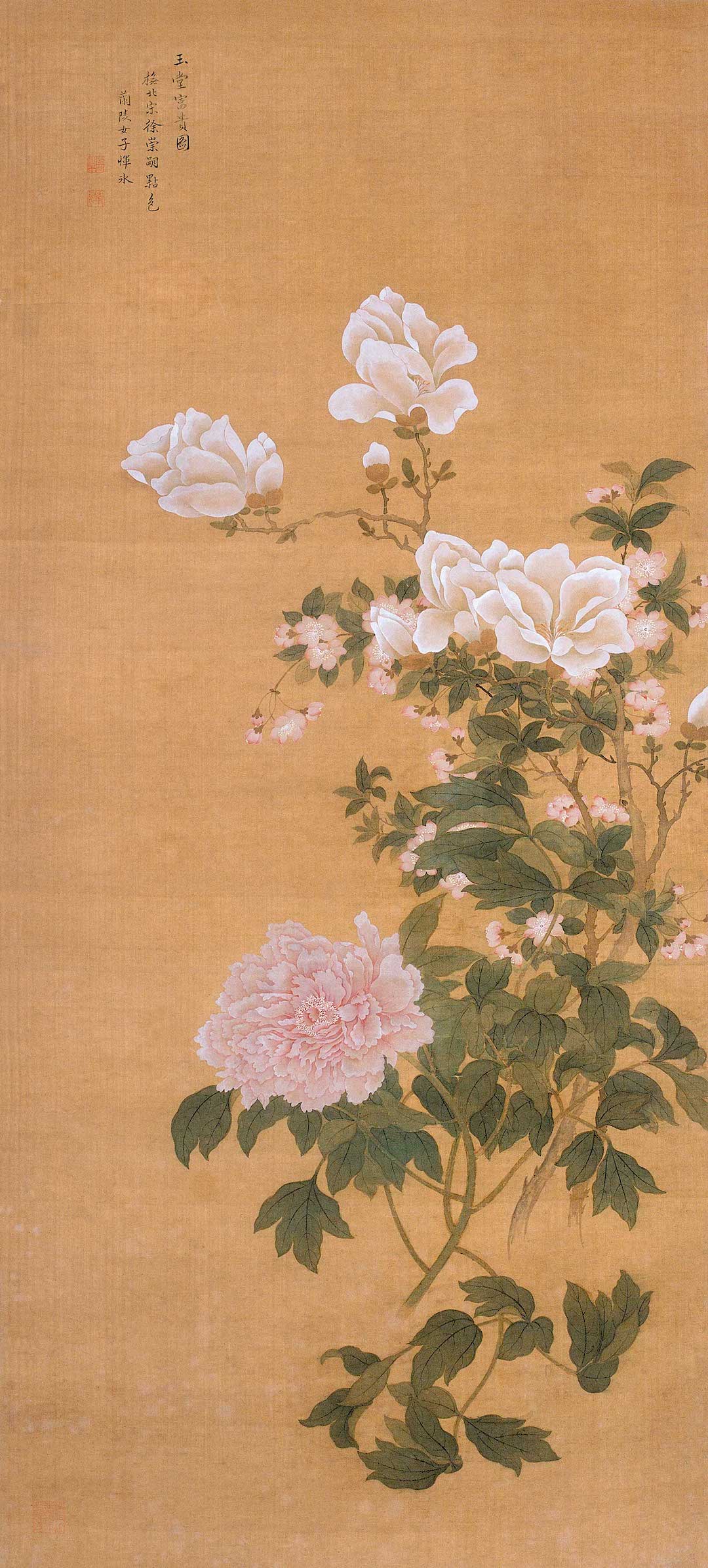
Yun Bing's "Jade Hall Wealth and Noble Picture" vertical scroll, ink and color on silk Changzhou Museum
Since the Ming and Qing Dynasties, although the different painting methods and aesthetic tastes of the academy style and the scholar style have continued to develop, they have also absorbed each other. With the growth and decline of social customs, flower and bird paintings have tended to taste both refined and popular, and formed many conventional compositions and meanings. These examples are scattered throughout the exhibition, and some of the paintings listed in this section emphasize the core life concepts of the Chinese people, such as longevity, wealth and contentment. These concepts are expressed in the paintings through the reminiscent characteristics of animals and plants coupled with Chinese homonym metaphors. For example, evergreen pines and cypresses, long-tailed ribbon birds and plum blossoms that are not afraid of severe cold are used to wish longevity; idea.
A Chinese-English bilingual catalog with rich pictures and texts will be published in conjunction with the exhibition, including a series of specially invited academic papers and detailed introductions to the exhibits. The China Institute and the National Art Museum of China plan to hold a series of activities related to the exhibition, including academic lectures and international seminars.
"Flowers on the River" is curated by Hai Weilan, director and chief curator of the China Institute of National Art Museum of China, Chen Zhuo, former director of Tianjin Museum, Lin Jian, director of Changzhou Museum, and Asian Art Department of Yale University Museum of Art Former curator Jiang Wenwei is the guest co-curator. The exhibition is jointly organized by China Institute of China Art Museum, Tianjin Museum and Changzhou Museum.
The exhibition is on view in New York until June 25 and will travel to the Santa Barbara Museum of Fine Arts from October 15, 2023 to January 14, 2024.
(This article is organized according to the relevant information provided by China Institute of China Art Museum, some pictures are from the Internet)

